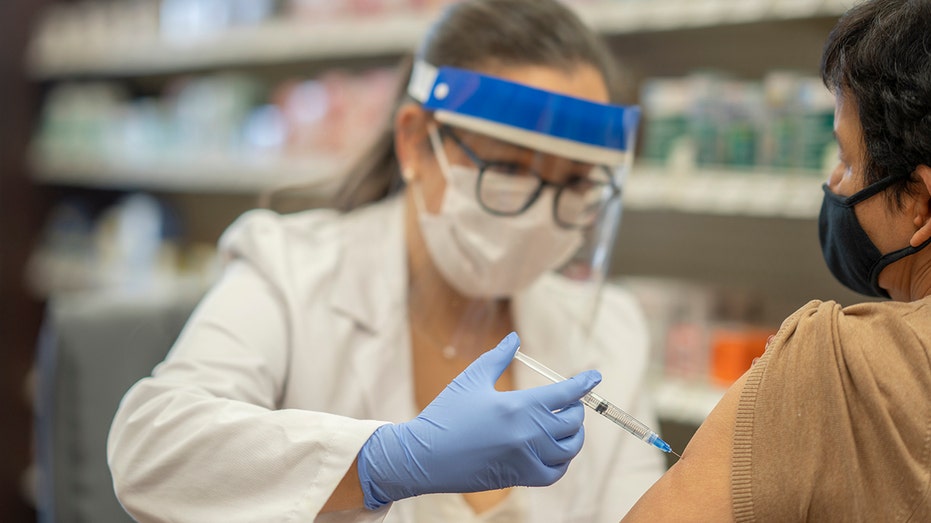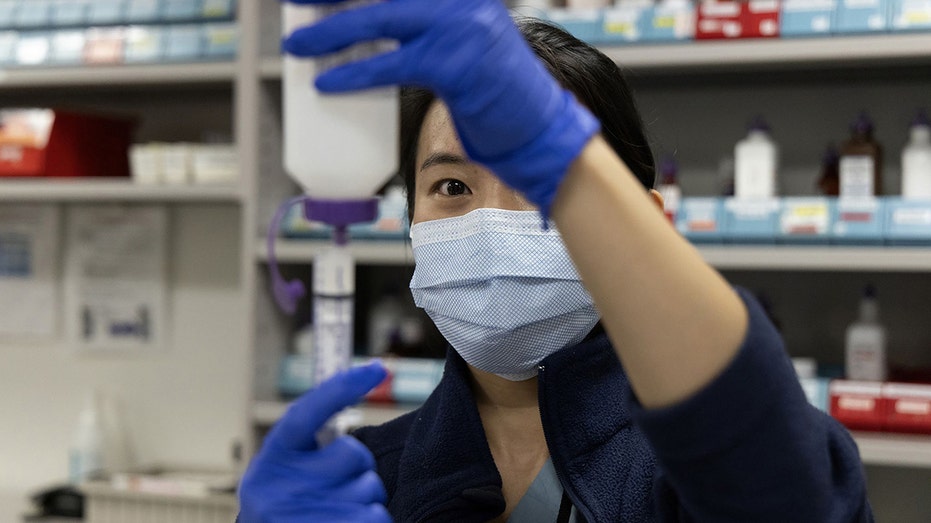The growing trend of overworked pharmacists has been worsening over the last three years and that's raising concerns about patient health and safety.
Pharmacists play many roles. They are not only responsible for dispensing medication in a pharmacy or facility setting, they often interact with patients, manage staffing issues, interact with prescribers and handle other important roles.
"Pharmacists were already on a collision course with burnout before the pandemic," says Heidi Polek, a registered pharmacist, and a strategic program manager at DrFirst.

Pharmacist Emad Wahba hands Sheila Vance, 66, a free COVID-19 home test that is covered by Medicare at a CVS in the Navy Yard neighborhood of Washington, D.C., Mon., April 4, 2022. (Tom Williams/CQ-Roll Call, Inc via Getty Images / Getty Images)
"No matter how hard or long they work, the clock is winning," she says. "Nearly three-quarters of pharmacists in a recent survey said they do not have sufficient time to safely care for patients and perform all the clinical services that come into the pharmacy."
That goes to show, adds Polek, burnout is more serious than a matter of pharmacists who need a vacation.
"Patient health and safety are at risk when pharmacists lack the staffing and resources they need to do their job safely," she adds.
According to Polek, many pharmacists want more time for patient care, to take on more of the critically needed healthcare services that led them to become a pharmacist in the first place.
"And patients today trust that pharmacists will be available to do more of their family’s basic healthcare, such as medication therapy management, flu, and COVID testing and treatment programs, and in many states, triage and care of minor ailments," Polek says. "If we don’t address burnout in the pharmacy, we stand to lose patient trust and the momentum it’s taken generations of pharmacists to achieve."
So, what can be done? Experts share that there are several strategies that can be implemented to help with this issue.

Masked senior woman getting a COVID-19 vaccine while at the pharmacy by a female pharmacist.
Utilizing technology to streamline workflow
Burnout is easier to address and less likely to happen overall at pharmacies that use technology for optimal efficiency, Polek says.
"Automation and artificial intelligence relieve pharmacists from rote tasks, such as putting pills in bottles, getting insurance approvals, and following up with doctors to complete prior authorizations," she says.
Streamlining the workflow cuts down on data entry and other tedious tasks safely, so pharmacists can do what gives them energy and purpose, Polek says.
"They need enough time to provide clinical services to their patients and the resources to keep patient safety front and center," Polek continues.
Restrict work hours
Dr. Rima Arora, director of the pharmacy for DiRx Health, says a policy of restricting the work hours of pharmacists to the normal 40 hours per week should be enforced. "The best way to do this is adequate staffing, so pharmacists can maintain a high quality of work without feeling burnt out," she says.
Another strategy is to make sure pharmacists are given lunch breaks. National pharmacy chains like CVS have implemented lunch breaks for pharmacists and pharmacy staff.
| +2.72% | ||||
"To ensure our pharmacists and pharmacy technicians are at their best, we implemented a pre-scheduled, uninterrupted lunch break across our pharmacies," says CVS Pharmacy spokesperson Amy Thibault. "The break gives our CVS Pharmacy teams a predictable and consistent daily pause while minimizing disruption to our patients. Most of our pharmacies are now closed from 1:30 p.m.- 2 p.m. local time."

Inpatient pharmacist Selena Ko reconstitutes powered antibiotic amoxicillin and measures doses for pediatric patients on Nov. 10, 2022, at Rush University Medical Center in Chicago, Ill. (Erin Hooley/Chicago Tribune/Tribune News Service via Getty Images / Getty Images)
Eliminating task-based metrics
In response to feedback from its pharmacy team members, Walgreens is eliminating all task-based metrics for retail pharmacy staff as part of their performance reviews.
"This move is a catalyst to enable our pharmacists to have an even greater focus on patient care and outcomes," says Walgreens spokesperson Erin Loverher. "It’s a step we’re taking to help foster a work environment that allows pharmacists to practice at the top of their license."
Loverher explains that pharmacists are now measured on the steps they take to deliver exceptional patient care and customer service, rather than metrics.
"This move creates a differentiated working environment at Walgreens," Loverher says. "It’s also part of a broader investment to create efficiencies behind the counter and give pharmacists additional time to focus on providing patient care and clinical services."
| -0.95% | ||||
She says enabling Walgreens’ pharmacy professionals to focus on the areas for which they are licensed and provide expanded patient care not only helps them better serve our communities but allows for more fulfilling and purpose-driven work for their team members.

